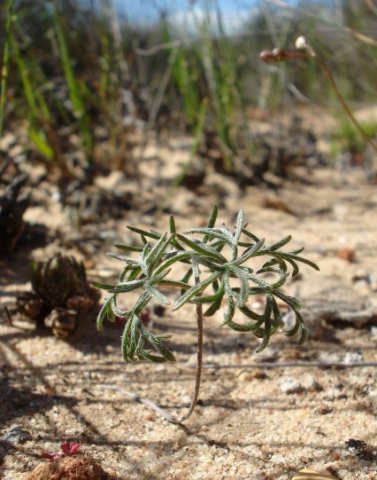Pelargonium reflexum

Author: Ivan Lätti
Photographer: Judd Kirkel Welwitch
Pelargonium reflexum is a dwarf geophyte growing from a globose tuber to around 15 cm in height.
Each umbel-like inflorescence bears up to five flowers, the peduncles branching and the pedicels short. The five lanceolate sepals of each flower end in acutely pointed tips. One is erect, the others recurved. The hypanthium is up to 22 mm long.
The five petals are white, their shape obovate to oblanceolate ending in rounded tips. The upper petal pair is slightly bigger, marked in feathery wine-red near the base. The lower three petals are unmarked. There are usually five fertile stamens in three lengths.
The specific name, reflexum, refers to the many floral parts that are reflexed, including the petals, the stigma and one of the stamens.
Bloomtime is early summer until after midsummer.
The species distribution is very restricted in the southwest of the Northern Cape, in part of the Bokkeveld Plateau near Nieuwoudtville.
The habitat is fynbos in rocky terrain and on sandy flats. The habitat population is considered endangered early in the twenty first century, due to rooibos farming, overgrazing and plant collection (iNaturalist; https://www.pacificbulbsociety.org; https://www.pelargonium.si; https://www.worldfloradb.net; http://redlist.sanbi.org).

